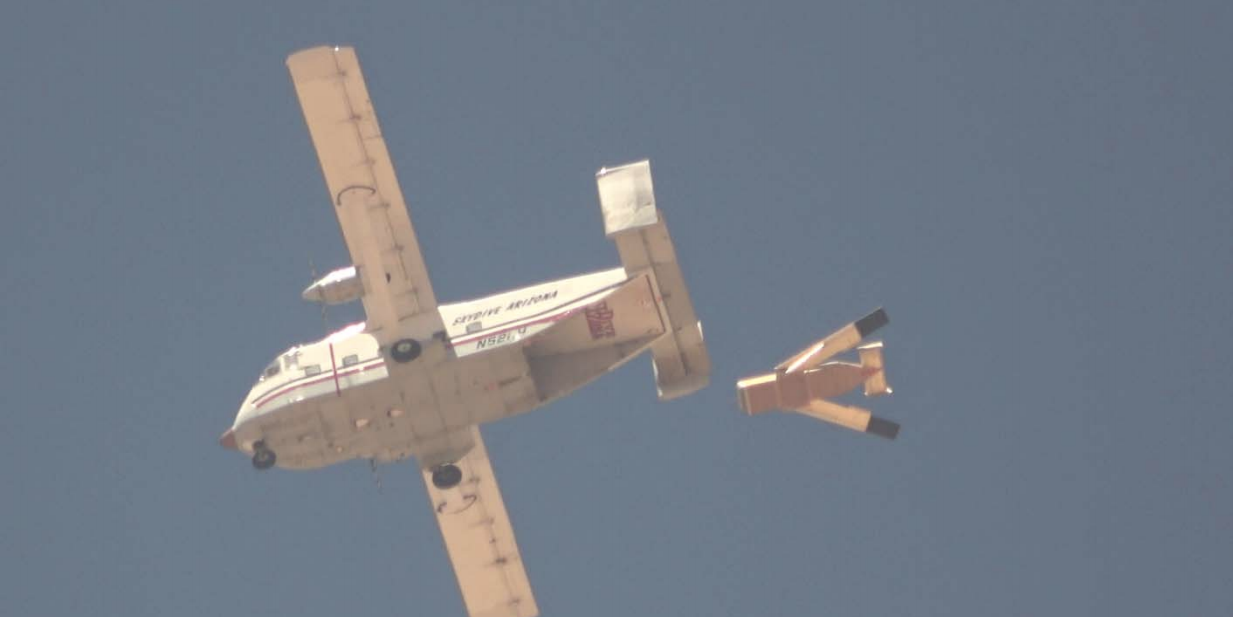The Marines Are Test-Flying Their Plywood Drone

A wooden aircraft is flying the California skies, but this is no spruce goose.
LG-1K, developed by Logistic Gliders Inc under contract with DARPA and the U.S. Marine Corps Warfighting Laboratory, is meant to be a very low-cost drone capable of being released from fixed-wing aircraft or helicopter. The plywood and aluminum drone is 10.4 feet long with a 23=foot wingspan. The LG-1K can carry up to 700 lb.s of supplies. It's now flown twelve missions demonstrating its ability to glide-in some cases autonomously-to a landing zone with GPS precision.
The drone is pushed out the back of an aircraft or released from a sling load. The wings are folded back during transport but pop out once the drone is airborne. The LG-1K zip at speeds of up to 135 knots and can be programmed to fly to specific waypoints to navigate around rough terrain. On approach to the target, it pops a parachute at 200 feet and comes in for a landing.
The company expects it to be compatible with MV-22 and CV-22 Osprey tiltrotor aircraft, KC-130, C-130, and C-17 transports, and MH-60, UH-60, CH-53, and CH-47 helicopters. The MV-22 Osprey, for example, could carry up to three of the drones, and Aviation Week & Space Technology says a C-130 could carry as many as 18, potentially resupplying many units with a single overflight.
The drone, which is made from plywood and aluminum, is designed to be cheap and expendable. While the gliding body itself is extremely low-tech, the drone also incorporates electronics and control systems that allow it to fly by remote control or autonomously to a set of preprogrammed GPS coordinates. According to Aviation Week & Space Technology, Logistics Gliders anticipates the cost of each drone at approximately $4,500 to $11,000.
The drone could be used to support ground troops in wars such as Afghanistan and against the Islamic State, delivering supplies to friendly columns patrolling miles from a forward operating base. It would also be useful against near-peer threats such as Russia or China with advanced air defenses. In a major war, U.S. ground forces, particularly those operating on small islands, could find themselves close enough to the enemy to be cut off by air. A resupply aircraft could fly right up to the edge of enemy air defenses and release supply drones that could fly the rest of the way on their own without placing human beings at risk.
Read more atAviation Week & Space Technology
('You Might Also Like',)

